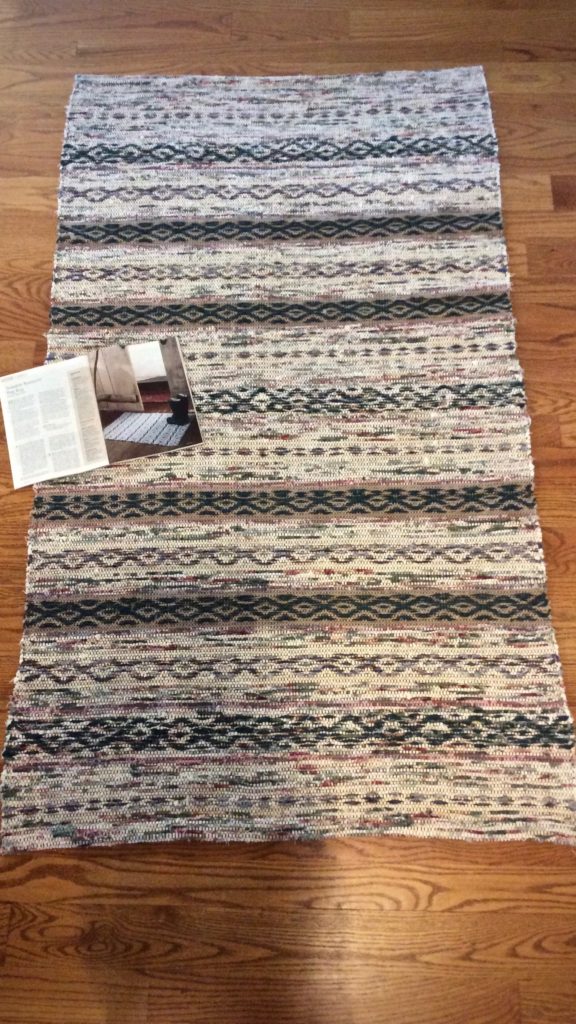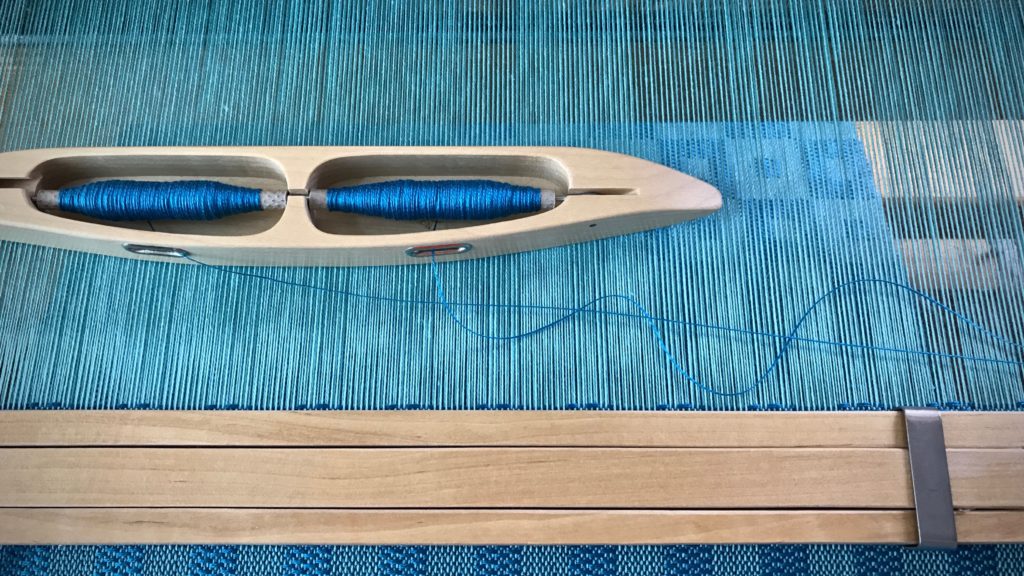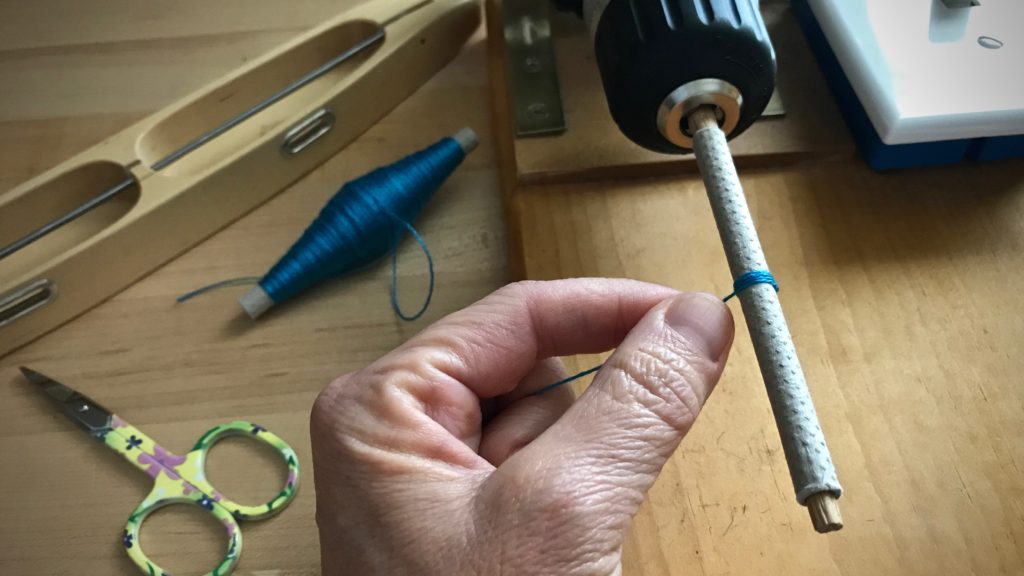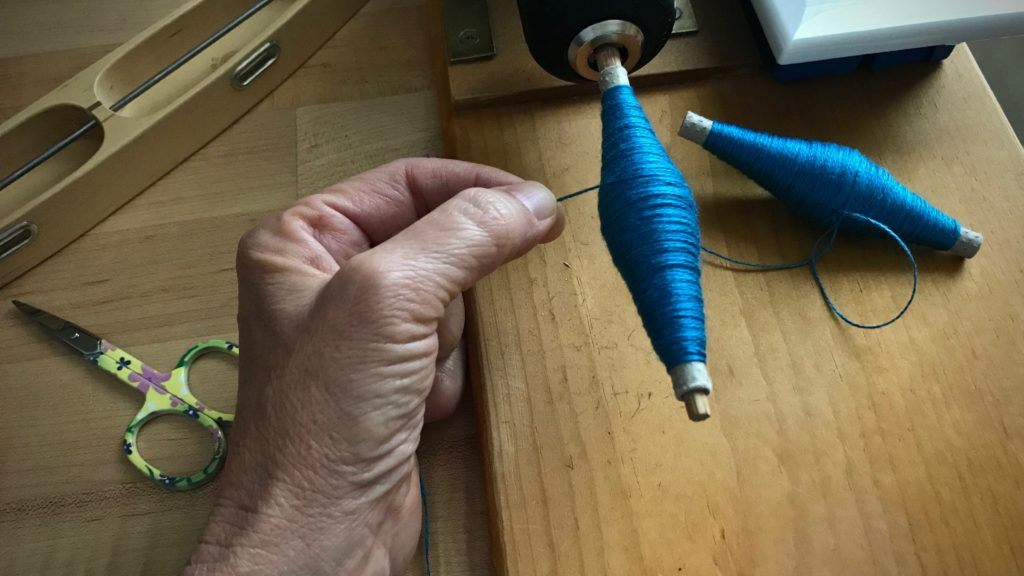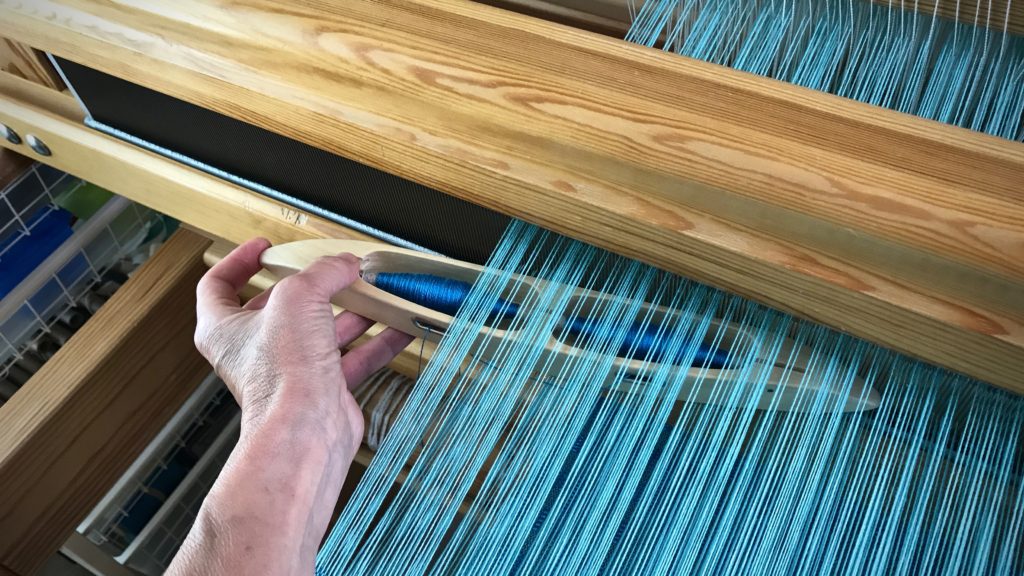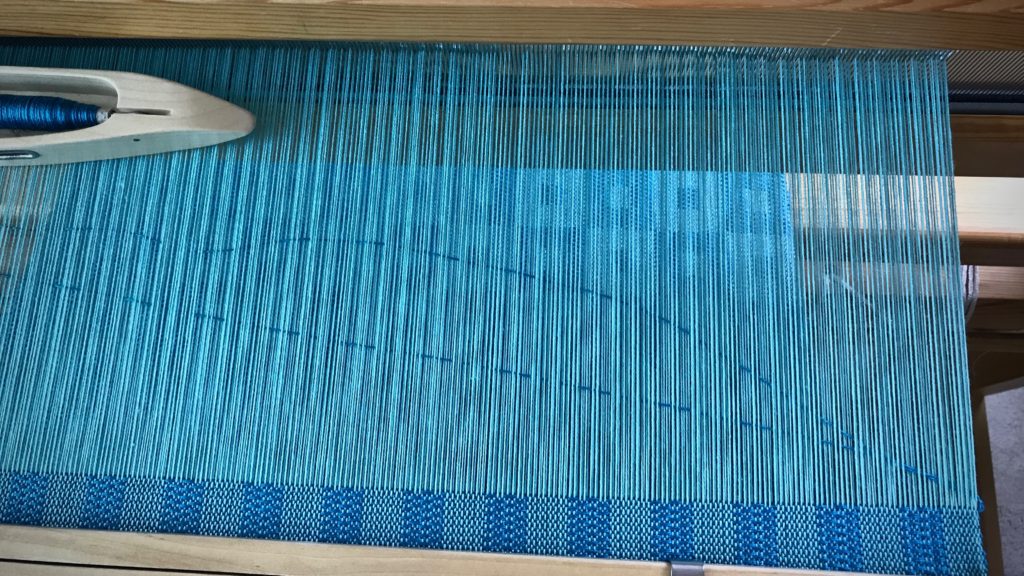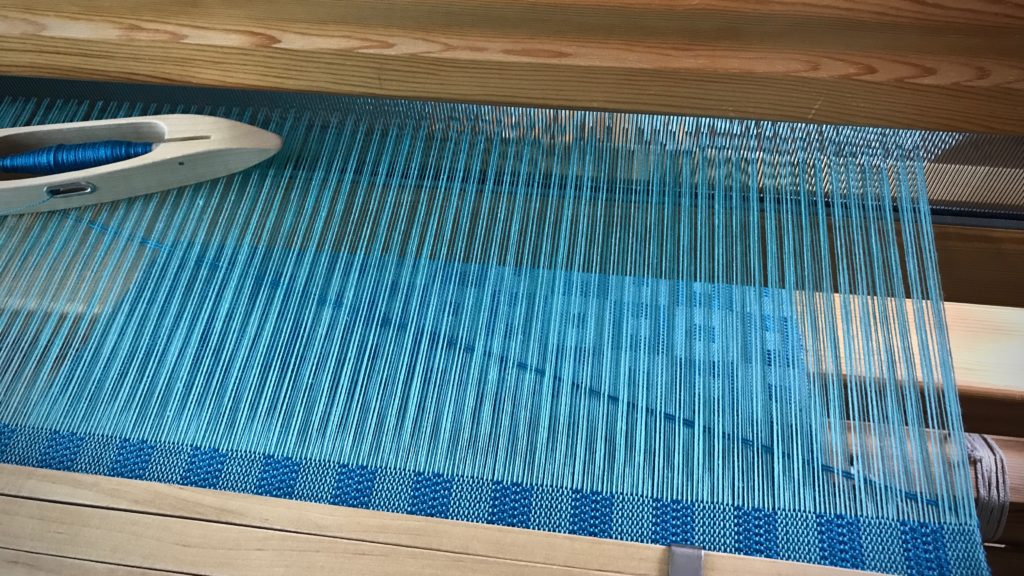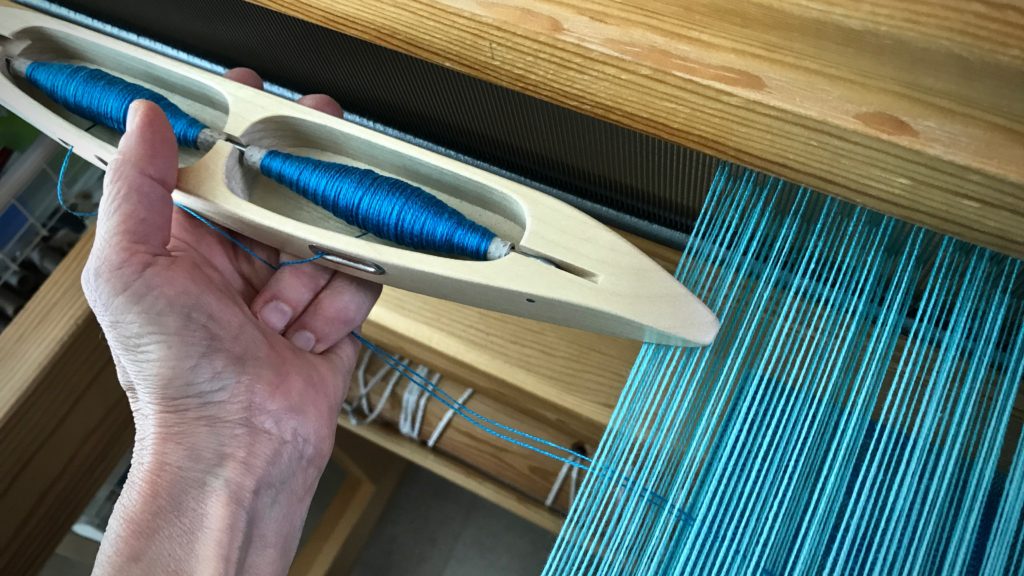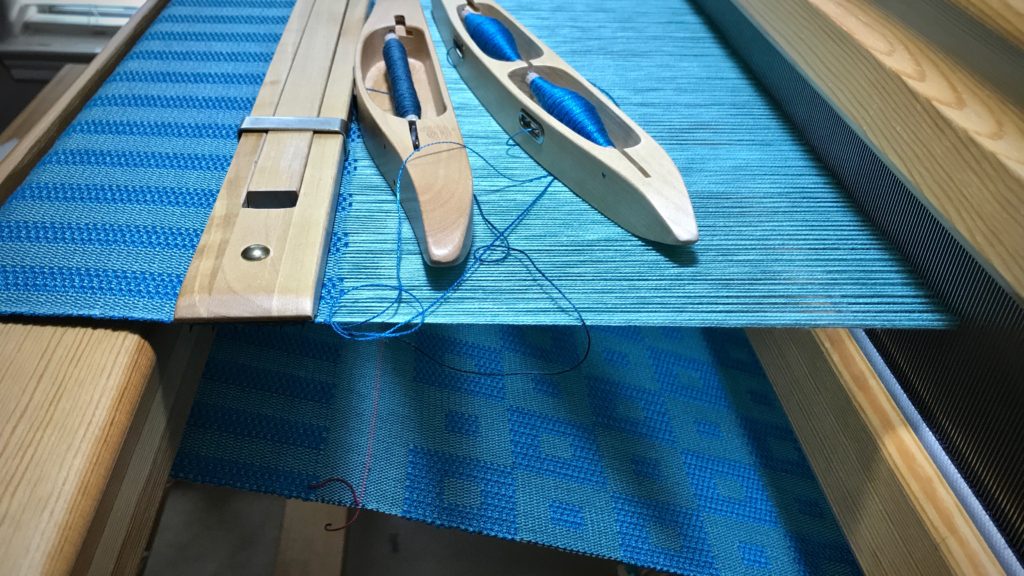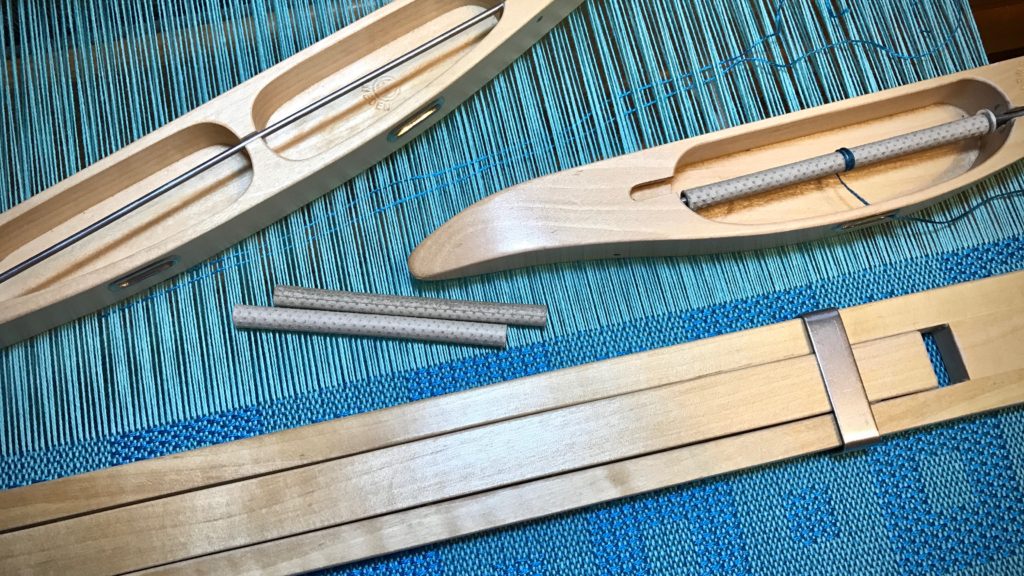Simplicity, purity, new. It’s invigorating to start something fresh. Weaving this delicate cloth in neutral colors is calming, but not boring. The linen sheen makes it spectacular. This is the delightful texture of M’s and O’s on a cotton warp, with linen weft. Peer across the cloth at a lower angle and you will see the linen’s pearlescent glory embedded in the woven texture.

Even though weaving seems like magic at this stage, it has been preceded by a lot of planning, precision, and patient work. This new creation is refreshing because it’s everything I had imagined it would be. And the linen is doing as expected–making the fabric “glow.”


The best creation is what happens inside of you. There is hope for all those who long for a fresh start. The dusty and worn threads are replaced with a new warp. Cut my selfish ways off the loom, Lord. All the preparations have been done by the Grand Weaver that enable weaving to begin. Create a clean heart in me, Lord. Let my life glow with the linen of your Spirit woven through my soul.
May you be refreshed.
Love,
Karen
~They’re back~ Towel Kits ~
By request, I have put the towel kits back in my shop! The River Stripe Towel Set, Pre-Wound Warp and Instructional Kit, for $150 per kit, is now listed again in the Warped for Good Etsy Shop. Happy weaving!





